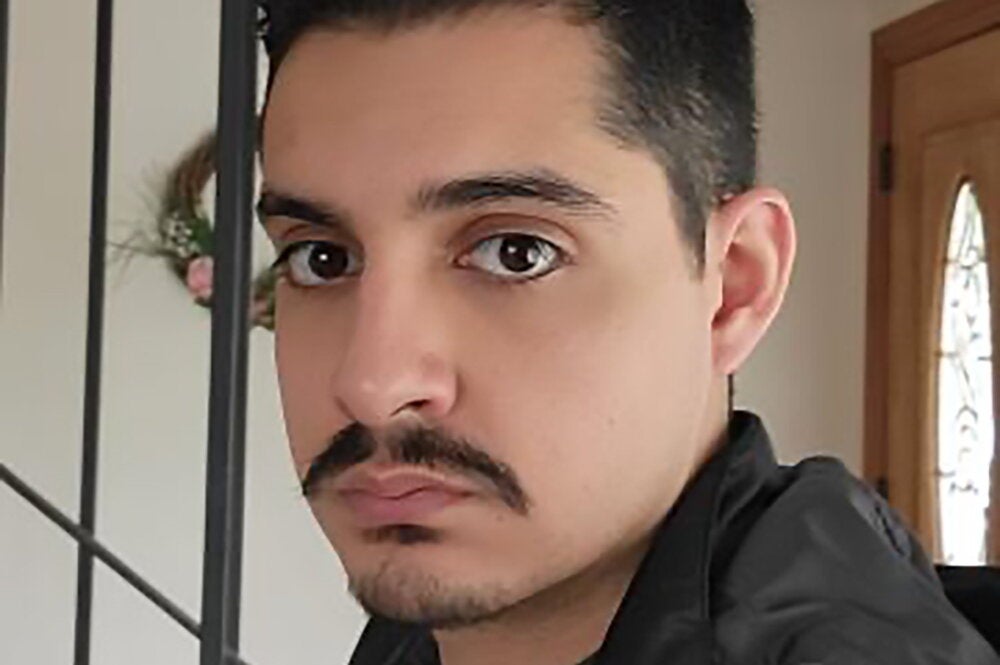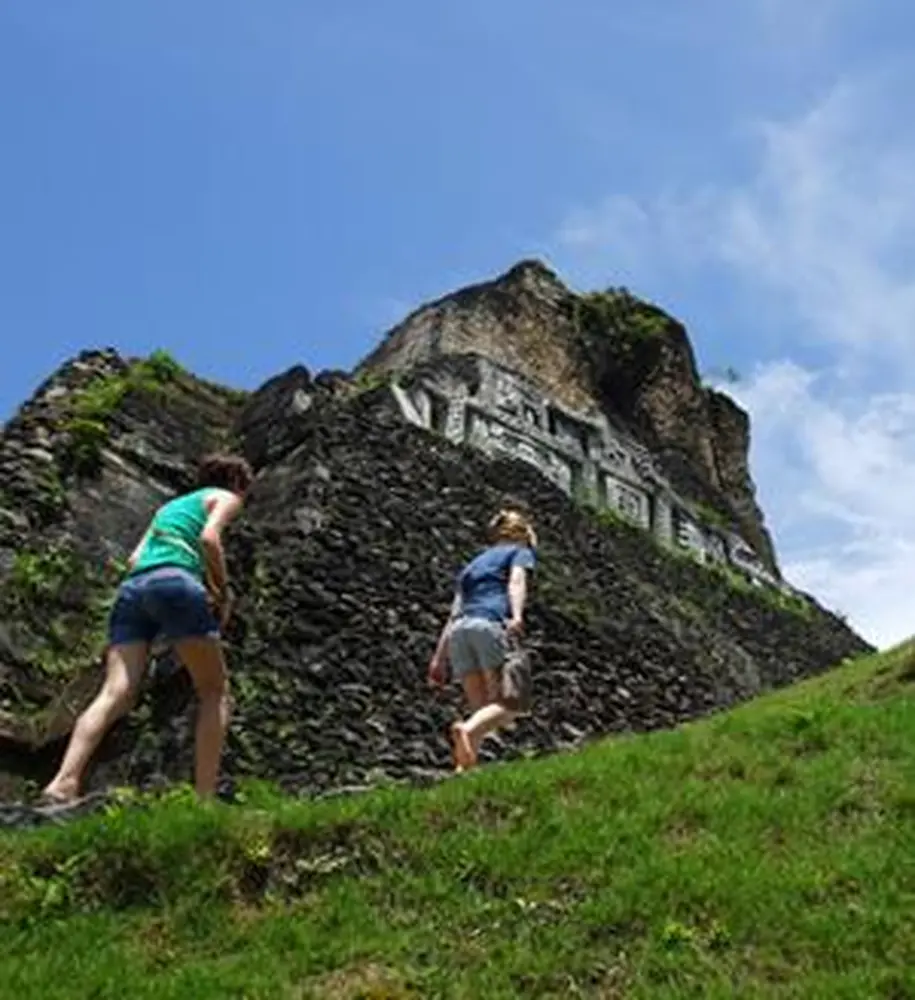
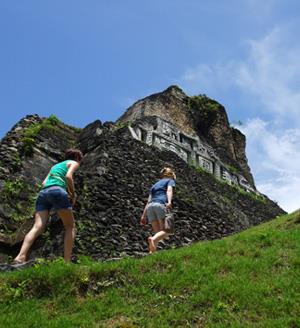
Ten adventurous undergraduates—some of them anthropology majors—spent six weeks this summer at an archaeology field school in Belize. Field school is required training for those hoping to make archaeology a profession, and can aid the decision-making process for anyone unsure about being cut out for the job.
That was true for Andrew Crawford, 21, a senior in anthropology from Sullivan, Ill.
“I wanted to see how much I would like it because if I absolutely hated it I would have needed to change plans,” he says. Now he knows he wants to “one day be a professor and do my own digs,” he says.
Sara Schroeder, a 19-year-old junior from Chicago, is a pre-med student and anthropology major. She always planned to go to med school after getting her degree, but now thinks she will take her medical college admissions test and apply to an anthropology graduate school, to keep her options open. She is grateful for the opportunity to hone her archaeology skills.
“The students come away with a general understanding of what it takes to run a project, as well as the skills necessary to conduct archaeology,” says anthropology professor Lisa Lucero, who led the expedition. “So that includes excavation, setting up units, screening, taking notes, photographing, drawing plan views and profiles, and learning how to survey.”
Two teaching assistants and five men from a nearby village also joined the project. The local men, who have worked with Lucero on other digs, helped train the students. They also knew the jungle—no one ventured there without them—and were ambassadors to the local culture.
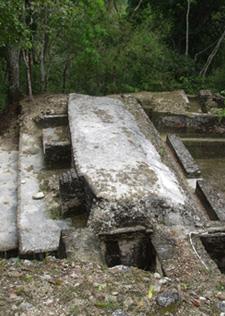
The team excavated small parts of a Maya center called Yalbac in central Belize. It was a gathering place for people from a wide agricultural region, used from about 300 B.C. to A.D. 900. It includes six temples, a ball court, a plaza, and several other structures whose functions have not yet been identified, Lucero says.
The schedule was tight. The team was on the road by 5:30 a.m. every day. After a quick breakfast and van ride, they got to the site by 7:00 a.m. They hauled their equipment—buckets, shovels, trowels, notebooks, and a tool called a pick-a-hoe—to the excavation areas and got to work.
It was hot, humid, and buggy. They needed machetes to slash through the vegetation. They had to wear protective clothes and watch for snakes and scorpions.
Once the digging began, they found a lot of artifacts: pieces of ceramic vessels (sherds), semiprecious stones, bits of charcoal, stone tools, and flakes of rock that had been shaped by human hands.
“I learned a ton of stuff,” says Susie Wachowski, 20, a junior in archaeology from Clarendon Hills, Ill., who is minoring in art history. “I learned how to map. I learned how to excavate properly. I learned how to catalog and do diagnostic stuff with ceramics.”
“At first I had trouble telling the difference between a flat rock and a piece of a vessel,” Crawford says, “but after awhile it was easy.”
“You get used to picking up artifacts,” says Peter Diebold, a sophomore majoring in molecular and cellular biology. “You fill up bags with bits and pieces.”
Diebold, 19 at the time of the trip and a native of Glen Ellyn, Ill., doesn’t plan to pursue a career in archaeology. His field is genetics.
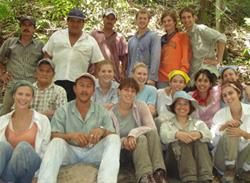
“But the entire experience is going to stay with me,” he says. “It was definitely one of the best experiences of my life.”
One of his favorite moments came on a visit to a cenote, a pool weathered in the limestone rock. Pools and caves were important to the Maya, who venerated them as sacred sites and often built ceremonial structures nearby.
A spirit of adventure gripped Diebold as he and the others hacked a path to the pool.
“We had our machetes, and we’re chopping away and I thought, ‘Wow, I’ve dreamed of doing this kind of thing since I was, like, 4 and I’m doing it now! I’ve got my machete, and I’m cutting stuff up and it’s awesome!’”
While surveying near the center of another pool, Crawford had a more dramatic encounter. He noticed what looked like a floating log—or a crocodile. He pointed it out to his surveying companion, and they agreed to keep an eye on it. After a moment, the “log” slowly sank below the surface of the murky pool.
“We didn’t freak out. We actually started laughing,” Crawford says. “But I think the laughter was to mask our fear.”
The two swam as fast as they could and scrambled out of the pool.
On their excursions to caves and archaeological sites, the students saw several examples of Maya architecture, including burial sites and temples. They visited a cave that included human remains. They also saw a lot of wildlife: howler monkeys, spider monkeys, tarantulas, and exotic birds. On one excursion in Guatemala, they zip-lined (gliding on a cable through the tops of the trees in a harness attached to a wheel).
“They learned all aspects of excavation,” Lucero says. “But they also learned about getting along, about teamwork, about interacting with people with different language skills, and eating different foods.”
For Lucero, who has led half a dozen field schools to Yalbac and other sites (this was her first as a professor at Illinois), nothing can replace the experience of immersing oneself in another culture and its artifacts.
“We are learning about the past in a society where the history record focuses on less than 1 percent of the population—the royals,” she says. The archaeologist uncovers the story of those left out of the written histories, she says.
For Crawford, a moment of insight came as he and the others swam in a cave that held human remains and was sacred to the Maya. Deep in the cave, the students’ only light came from the lamps strapped to their heads.
“We all knew the caves were of ritual importance,” Crawford says. “It was considered a crossover between the underworld and the living world. But until you actually see it and you turn the headlamps off and you kind of imagine the way they saw it, it doesn’t really make sense to you.”
The undergraduate students paid their own expenses, but the field school was also made possible with funding through an Arnold O. Beckman Award and a grant from the Center for Latin American and Caribbean Studies at Illinois. The work was authorized by the Institute of Archaeology in Belize, which is part of the National Institute of Culture and History of the government of Belize.

